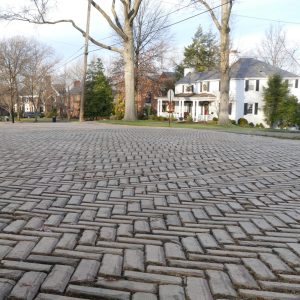the air that I breathe

When I don’t live in Mt. Lebanon, I live in San Diego, in a house overlooking the Pacific Ocean. The view is spectacular, and we spend evenings sitting on the patio sipping wine and nibbling on any variety of cheeses and crackers that we stockpile for these occasions, watching the sun set.
In Mt. Lebanon, we sit on our back patio surrounded by sky-high pine trees, pots of flowers, and citronella candles. We stockpile mosquito repellent and keep it handy by the back door.
Comparatively, we should consider ourselves fortunate to be able to breathe that clean, fresh, healthy ocean air.
But wait a second … chances are that our Pittsburgh air is healthier for us than the ocean air.
When we think about ocean air, we often think of cool breezes that blow air untouched by humans from hundreds of miles out at sea to the coast.
But what most people don’t realize is that the air that comes from the open seas actually comes from other continents all over the world, picking up various particles along the way. It takes less than a week to arrive on U.S. coasts. After accounting for various effects of the atmosphere, in essence we’re all breathing a mixture of air that could include byproducts of industry from Asia and dust from Africa.
Stop to think about what air is made of: Other than the 78 percent nitrogen and 21 percent oxygen, at sea level, air contains about 1 percent water vapor; inland that percentage is about 0.4 percent. So whatever contaminants go into the ocean will also get into the ocean air, more so along the coast.
That’s right: knowing what goes into the ocean means that we know what goes into the ocean air—everything from well known industrial pollutants like mercury or lead to less familiar threats like salts or viruses—we just don’t think of ocean air that way.
Here’s how it happens: the top one millimeter or so of the ocean’s surface is responsible for transferring particulate matter from the water to the air via ocean spray. When waves break and make ocean spray, the spray releases gases and aerosols into the atmosphere and into the air we breathe. Most people are somewhat familiar with aerosols. Aerosols are very fine particles suspended in gases, and most people use them in substances like hair spray or air freshener. When we talk about aerosols in ocean spray, those particles can include bacteria, salts, chemicals and more—the types of things that we find in the ocean itself.
In Southern California we have beach advisories that warn of unhealthy conditions, not only for what may be in the water and sand but also for what may be in the ocean air.
I know Pittsburgh is far removed from any oceans, but I grew up here and remember the smokestacks and polluted rivers and see how environmental awareness and knowledge have changed all of that to create cleaner air and water. The problem is that air quality is not a local problem.
Look at it this way: We worry about what we put in our bodies, so we drink bottled water, buy organic vegetables and use phosphate-free detergents to avoid toxins. But we don’t eat and drink nonstop all day, every day. Conversely, we breathe 100 percent of our lives, but what do we do to avoid inhaling toxins?
My family and I enjoy being bicoastal. In one sense, there is a night-and-day difference between our two homes that makes them seem worlds apart. In another sense, we can travel that distance quite easily, which continues to remind us how small our planet is. When we sit on the California patio and the sun sets over the horizon, the ocean seems endless. In real life, though, we have to remember that we can easily travel over it to land on the other side in just a few hours.





